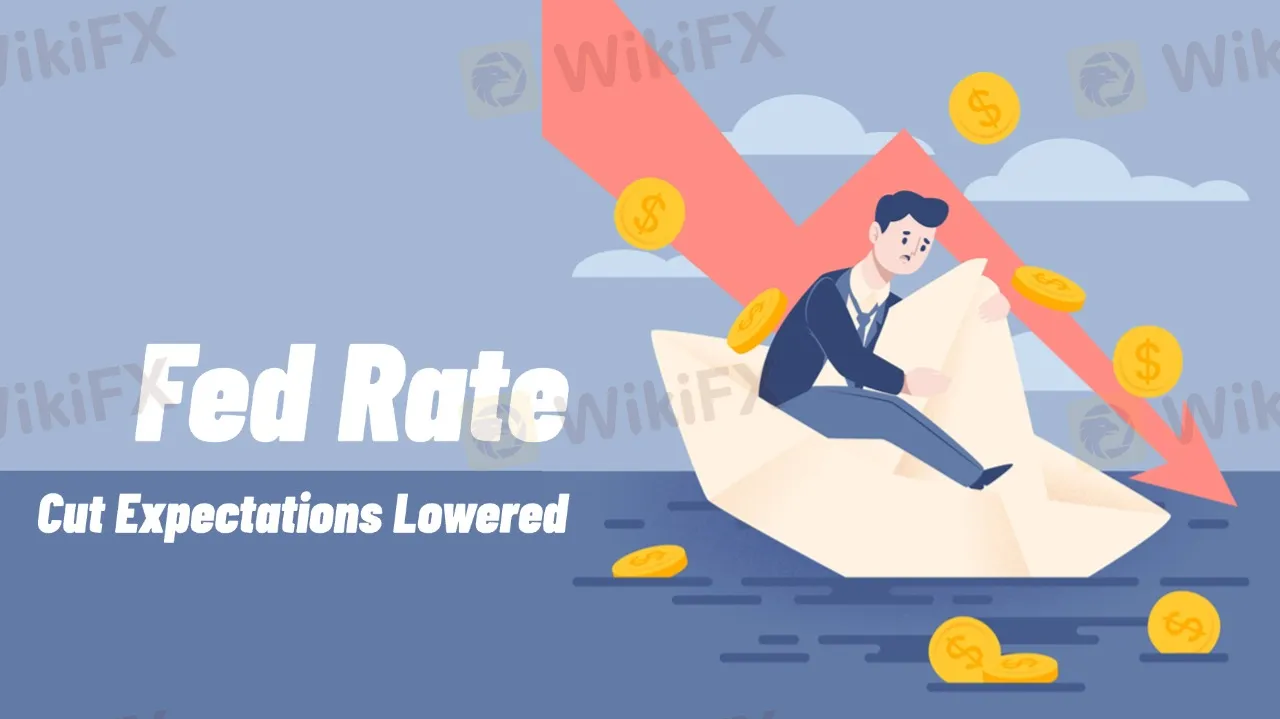简体中文
繁體中文
English
Pусский
日本語
ภาษาไทย
Tiếng Việt
Bahasa Indonesia
Español
हिन्दी
Filippiiniläinen
Français
Deutsch
Português
Türkçe
한국어
العربية
Fed Rate Cut Expectations Lowered
Abstract:Federal Reserve officials have adjusted their rate cut expectations, now anticipating only one rate cut this year instead of the previously expected two.

Persistent inflationary pressures have led to a more cautious policy stance, drawing market attention to its potential impact.
Recently, Federal Reserve officials have signaled a more conservative approach, emphasizing the uncertainty surrounding the disinflation process. Atlanta Fed President Raphael Bostic stated that, considering inflation volatility, he has revised his rate cut forecast from two to one this year.
He pointed out that maintaining stability is preferable to making premature cuts and then having to reverse course, reducing the risk of policy missteps. Additionally, he now expects inflation to return to the 2% target by early 2027, later than previously projected.
The slower-than-expected decline in inflation has made the Fed more cautious in adjusting its policies. Bostic believes that inflation remains at risk of rising, particularly due to external factors that could push prices higher.
Furthermore, the U.S. economic growth rate is expected to slow, leading Bostic to lower his GDP growth forecast for this year to 1.8%, down from the previous 2.1%. The unemployment rate is projected to be between 4.2% and 4.3%, an increase but still within a relatively stable range. Given this economic backdrop, the Fed is taking a more restrained approach to rate cuts to prevent premature policy easing from undermining its inflation control efforts.
How Will the Market React?
The adjustment in rate cut expectations poses challenges to market sentiment, prompting investors to reassess the impact of the interest rate environment on asset prices. While the market had anticipated a more accommodative Fed policy, it must now contend with the possibility of higher interest rates persisting for an extended period.
Moving forward, market trends will depend on inflation data and further signals from the Federal Reserve. Investors should closely monitor economic indicators and adjust their strategies accordingly to navigate potential market fluctuations.

Disclaimer:
The views in this article only represent the author's personal views, and do not constitute investment advice on this platform. This platform does not guarantee the accuracy, completeness and timeliness of the information in the article, and will not be liable for any loss caused by the use of or reliance on the information in the article.
Read more

Fed Holds Rates Steady! Yen Faces Growing Uncertainty
The Fed stays put but strikes a hawkish tone. The yen remains under pressure as market uncertainty deepens.

Is Your Money Safe with Libra Markets? Check Out Fast!
n this exposure episode, we will take you through the heinous game played by Libra Markets, an unregulated forex broker. Take a look at how people are facing issues regarding withdrawals.

TradeHall vs. HYCM: Which Broker Should You Choose?
When choosing a broker, understanding the difference between superficial features and real regulatory protection is essential. In this article, WikiFX will compare TradeHall and HYCM. While on the surface, both brokers offer a wide range of trading instruments, the real difference lies in their regulatory statuses, which is a commonly overlooked factor for traders when they opt for brokers.

Trade Nation vs. FBS: Which Broker Is Better for New Traders?
If you're new to trading, choosing the right broker can feel overwhelming. Two popular choices, Trade Nation and FBS, offer very different experiences. This comparison breaks down which is better suited for beginners, based on ease of use, safety, costs, and support.
WikiFX Broker
Latest News
Danske Bank expects the European Central Bank to make its final interest rate cut in September.
Retirement Dreams Shattered: Don't Do This To Yourself!
EU Regulators Imposed Over €71M in Sanctions in 2024, ESMA Calls for Enforcement Convergence
No Regulation, Revoked Licence: Is Tradehall Safe to Use?
Philippines Sets Southeast Asia’s First Crypto Regulatory Framework
Tether Freezes $12.3 Million in USDT Over Money Laundering Concerns
MiCA Unlocks EU Crypto Market, but National Tensions Rise as Gemini and Coinbase Near Approval
FortuixAgent Review 2025: Is it Scam or Legit?
MetaTrader Support Ending July 2025: Update Now or Risk Losing Access
HYCM Broker Review 2025: A Comprehensive Overview
Currency Calculator



